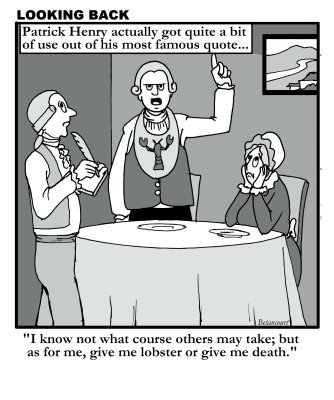The state of TIAH
July 31st, 2006
in 1953, President Robert Taft dies of cancer in Washington, DC. Taft had correctly calculated America's mood after World War II and the Korean War and had campaigned on an isolationist platform, beating his Democratic opponent, noted General Dwight Eisenhower, who was seen as a man likely to keep America entangled in world affairs. Taft's withdrawal of America from the greater world community had barely begun when he grew ill, though, and his vice-president, Joe McCarthy, found himself in the big chair completely unprepared for the job; the ceasefire in Korea was only 4 days old, and tensions around the world were high. McCarthy proved everyone right about him – he had been chosen as VP just to make Taft look good. A week after taking office, ill-chosen tactics of his reignited the Korean conflict, and his push for the screening of communists from all government jobs caused a resurgence in what had been a dying political movement in America. Robert La Follette Jr, an old foe of McCarthy's from Wisconsin, switched from the Republican Party to the Socialist Party and was elected governor of Wisconsin, sparking a wave of left-leaning politicians to join him. McCarthy denounced them all as traitors, which only seemed to fuel America's desire to elect them. In the mid-term elections of 1954, Republicans became an endangered species as Democrats and Socialists won more elective offices than ever before, and the GOP was reduced to a handful of seats in the House and Senate. When President McCarthy drunkenly threatened to launch nuclear weapons against North Korea, his opposition in the Congress drew up impeachment papers; they were aided by McCarthy's vice-president, former Senator Richard Nixon of California, who saw McCarthy's troubles as the means to propel himself into the White House. McCarthy was impeached and removed from the presidency in August of 1955, and Richard Nixon took the oath of office that same day. Dealing with a fractious Congress composed of Democrats, Socialists and a few embittered Republicans seemed to bring out the best in Nixon – he renegotiated a cease-fire in Korea and proved far less incendiary in world politics than either of his predecessors. Still, America didn't trust him enough to elect him to the office in his own right, and Adlai Stevenson of Illinois beat him in the 1956 election to become America's 37th president.
in 1964, the Ranger 7 probe takes several close-up photos of the moon before crashing into the surface. The probe had become necessary after a previous one, Ranger 6, had experienced a failure in its camera mechanisms when it had been sent up. The pictures sent back by Ranger 7 revealed why Ranger 6 had failed – there were things on the moon, strange creatures that had strange guns that they had used to shoot down the Ranger probes. NASA was brought under the wing of the Defense Department, and America prepared for a war against the Moon Men.
in 1975, nervous Teamsters report their union boss, Jimmy Hoffa, missing after last seeing him in Detroit. He turned up the next day; it seemed that he had gone on a “Lost Weekend” with some friends in Las Vegas and had simply lost track of time. Although many union members would have been happy to see the troubled Hoffa disappear, he remained in the public eye for many years to come.
Get yourself into TIAH!
And, another cool thing - Let us know where you are on Frappr!
The Forum lives again!
 Good long fiction from the AH. See a review of Warp at Universe Pathways Magazine
Good long fiction from the AH. See a review of Warp at Universe Pathways Magazine
Help the Alternate Historian keep the site from growing stale!
My email address for contacting me with your writing samples, or good news, or for more direct goodness, go to the web site and leave a comment, buy a book, or leave a Paypal donation! Thanks again!
You can also visit the Co-Historian's store -










